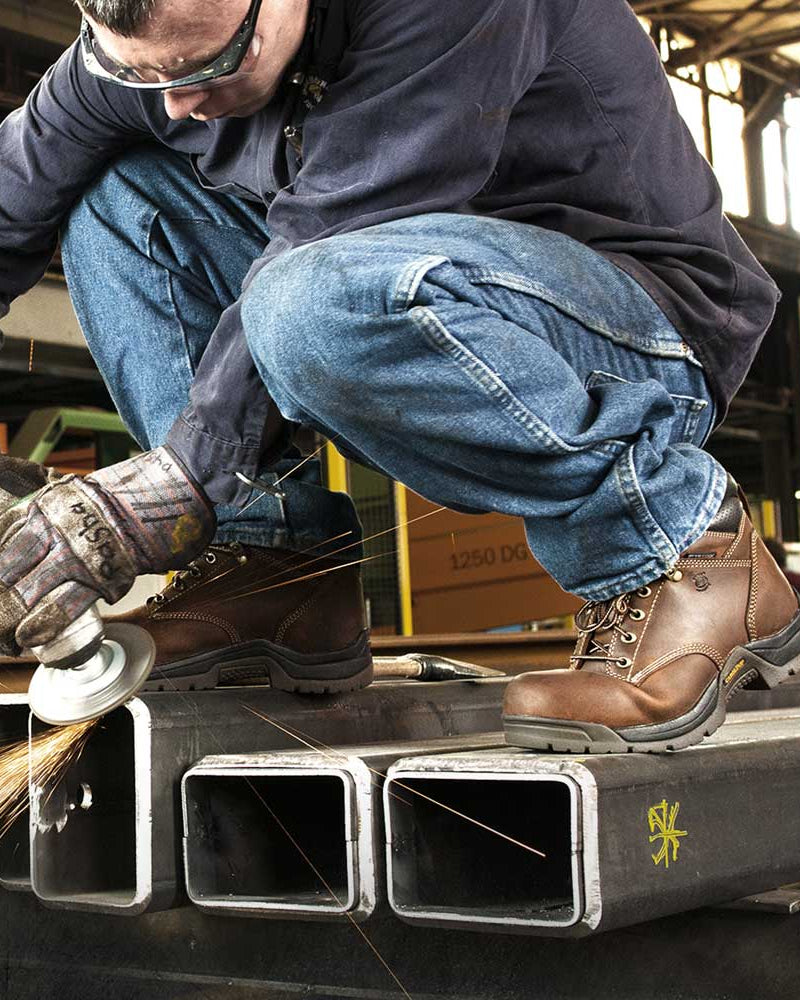
As Mother Nature continues to stretch, unfurling her vibrant greenery and fully coming into bloom, many outdoor enthusiasts are lacing up their boots and heading outside to shake off their cabin fever from the long winter. Nothing beats a satisfying hike through the forest, admiring the flora and fauna, and encountering a breathtaking mountain view at the end of the trail. In order to fully enjoy a trek off the beaten path, one needs the right pair of shoes. Blisters, scrunched toes, and sore feet are the last thing anyone wants to suffer through when journeying for miles in the wilderness.
During the hunt for the perfect hiking boots, some may be surprised to find that there's a much wider variety of outdoor footwear than they anticipated. Leather or synthetic, midsole material, and cuts? How does one even know where to begin? If you're stumped on which features are best suited for your trailblazing needs, don't fret! Allow us to help clear up any confusion so that you can find the best hiking boots that will be your "sole mate."
HIKING FOOTWEAR TYPES
The first step in deciding on hiking footwear is determining what purpose your shoes will serve, and what terrain you'll encounter on your journeys. A plethora of hiking boots for women and men are available. Trail running shoes are specifically for lighter walks or runs on maintained trails. Hiking shoes are a hybrid between trail running shoes and hiking boots, and are often used for lighter hikes, are more flexible, and have a low cut. Day hiking boots have higher cuts, and are ideal for lighter backpacking ventures and day trips. Backpacking boots offer more support and durability than day hiking boots, and are intended for heavy loads on backpacking trips. Last but not least, mountaineering boots are the only choice for the toughest, roughest, rockiest of terrain. If you plan on walking across ice, be sure to also check for their crampon compatibility.
THE CUT
The cut of the boot is catered to the type of adventures you'll be having. Low cuts should only be used on smooth, maintained trails, and is ideal for light hikes or runs. Mid cuts offer more ankle support and improved balance. Twisted ankles are one of the number one things you'll want to avoid on rougher trails, so in those instances a high cut boot is a must.
THE COLLAR
How many times have you worn boots that rub and cut into your ankles? It's not a pleasant experience. For hiking, it's essential to have a boot with a padded collar. The padding prevents your ankles from being rubbed raw by the shaft of your shoes. Comfort isn't the only advantage: they also help with ankle support, as well as abrasion protection from obstacles low to the ground that may bump or scrape against you during your adventures.

UPPERS
If you plan on trekking through streams or will encounter rain or snow on the trail, a water resistant upper is a must. Full-grain and nubuck leathers, and some synthetics offer excellent protection against wet elements. Look for any shoe labeled with a waterproof membrane such as Gore-Tex, as featured in The North Face Men's Hedgehog Fastpack. If you require more breathability and won't encounter any moisture, split-grain leather, mesh, nylon, and more man-made materials are the way to go. There are also vegan options for the most eco-friendly adventurer.
MIDSOLES
Comfortable, but sturdy, cushioning can mean the difference between misery and bliss. Few things are worse than being stuck on a week-long hiking trek with aching feet. The stiffer the midsole, the greater the stability when it comes to walking over rocks and other hard, uneven surfaces. EVA (ethylene vinyl acetate), comes in varying densities for different levels of support. It's more affordable and offers more cushioning. Our favorite is the Merrell Women's Agility Synthesis Flex. In contrast, Polyurethane midsoles are more firm, durable, and ideal for backpacking and mountaineering.
OUTSOLES
If the uppers are the meat of a hiking boot, the outsoles are the potatoes. It's essential to have good traction while journeying through the wilderness, so the right lug pattern depending on your terrain is required. Wide spacing between lugs keep mud from sticking to your soles, as well as offer great traction. Thick, deep lugs improve grip, and are used mostly with mountaineering and backpacking. Rubber is a staple in outsole construction when it comes to hiking boots, but can vary in stiffness when other elements such as carbon are added in order to improve durability.
TOE PROTECTION
Don't forget to protect your little piggies! Moderate toe protection is suitable for lighter, smoother terrain. It offers more flexibility and less weight, and is ideal for trail runners. For rougher landscapes where you're more apt to stub your toe on tree roots, a bigger toe cap is ideal. Another advantage is that more toe protection also can help your hiking boots last much longer through wear and tear.
Additionally, you may need to buy orthotic insoles for better arch support and comfort. Be sure to bring them along when trying on new boots to ensure that the shoes fit properly, as well as the hiking socks that you'll be wearing with them. Since your feet tend to swell, the best time to try on shoes to make sure they're not too tight is at the end of the day. This will make sure your feet stay comfortable, and that your shoes won't restrict your circulation during hikes. Men's hiking boots especially have several width options to help better achieve a correct fit. As with any new shoe, your new hiking boots will require some breaking in, so be sure to only stick to a few shorter hikes, or wear them around the house and while running errands at first. Once you've found your hiking boot Holy Grail and become accustomed to wearing them, you'll be ready to conquer any trail that comes your way!














